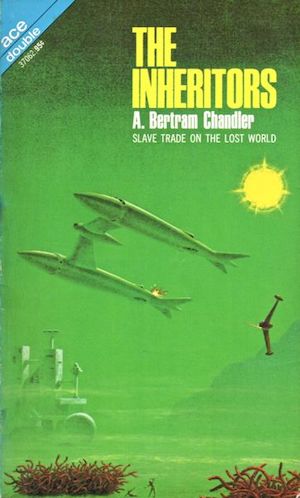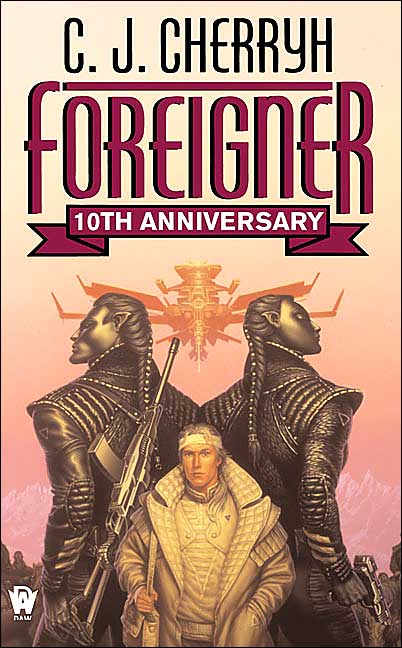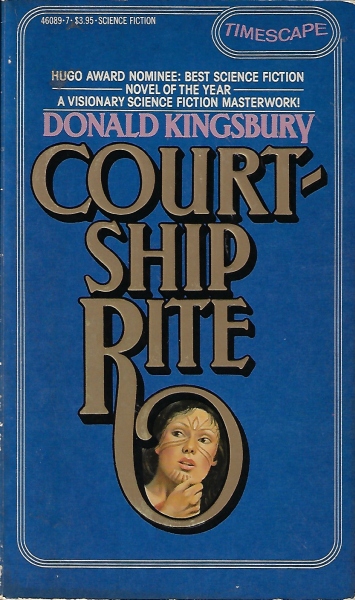Good news! Kepler data suggests there could be three hundred million or more potentially life-bearing worlds orbiting sunlike stars in our Milky Way. Sure, some small-minded people might point out the gap between “potentially life-bearing” and “actually life-bearing”—see Mars and Venus—and that just because a world has native life, it does not follow that it will support our sort of life—see deep-sea hot vents—but pshaw to that! Those of us raised on a heavy diet of SF novels know that superluminal travel is merely only one diagram-defaced napkin and a single busy weekend away, and that any vaguely Earthlike world can be settled with sufficient force of will.
Three hundred million is kind of a big number. To put it in universal terms, it is about as many Lego pieces as would be in a tightly-packed cube ten meters on a side. It’s more than enough worlds for one or two to slip through the cracks. Which brings us to that ever-popular trope, the lost colony.
It seems reasonable to distinguish between worlds that were lost by accident and those that were misplaced on purpose. Similarly, one can distinguish between worlds that have since been recontacted and ones that are still on their own. Thus, four basic flavours.
Accidental, found

Rim World stories by A. Bertram Chandler feature quite a few lost worlds, thanks to the peculiarities of the once-popular Ehrenhaft Drive. Under the proper conditions, an Ehrenhaft Drive-equipped starship could be flung across many light-years, to end up at its destination drained of power and unable to return. Habitable worlds are common in this setting, many of which have been involuntarily settled.
The Survey Service has considerable expertise where lost colonies are concerned. Reintegrating such worlds back into galactic society is a well-practiced art. As young Lieutenant Commander John Grimes discovers in 1972’s The Inheritors, the lost colony on Gamma Argo Four—called “Morrowvia” by its settlers—presents unique challenges. Uniqueness can be an asset, but in the case of the Morrowvians, theirs may leave them vulnerable to a form of brutal but entirely legal slavery that Grimes could be powerless to prevent.
***
Accidental, lost

C.J. Cherryh’s long-running Foreigner series (twenty-one books since 1994) begins when the starship Phoenix makes a startling discovery: their star-drive had a previously unsuspected failure mode that could—and in the case of the Phoenix, did—send them so far off course that no identifiable stars were visible. Return home was impossible.
A solar-type star with an Earthlike world was within reach. Inconveniently, the world had a native civilization of sufficient technological sophistication that humans could not hope to dominate. Having failed to conquer, humans reluctantly embrace accommodation. They are confined to their station and an island. All human contact with the atevi is funnelled through one man, the paidhi. It falls to paidhi Bren Cameron to navigate the dangerous world on which his people are trapped.
***
Deliberate, found

The hidden worlds of Kristin Landon’s eponymous series—The Hidden Worlds (2007), The Cold Minds (2008), The Dark Reaches (2009)—are hidden for good reason. Hiding on habitable worlds concealed within a nebula is humanity’s best hope to elude the machine intelligences that took Earth for their own.
Having led survivors to freedom, the Pilot Masters of the Line established a brutally hierarchal, patriarchal society with—surprise, surprise—themselves at the very top. Their monopoly on starflight made their position unassailable, save for two minor details: they didn’t actually have the monopoly on piloting skills they claimed, and the hidden worlds are not in fact hidden from the Cold Minds.
***
Deliberate, still lost

Donald Kingsbury’s Courtship Rite (1982) introduces readers to Geta, a desolate, hostile, metal-poor world setting. It was settled by humans in a distant past. Geta’s native life is biochemically incompatible with terrestrial lifeforms, which in turn means the only food available are the eight sacred plants—Earth crops presumably imported by the original colonists—and humans themselves. These constraints have shaped the settler culture into one any avid Social Darwinist would adore.
Oelita the Clanless One is a heretic who believes humans did not descend from the sky as legend says, but rather evolved from local lifeforms; she disapproves of murder; she frowns on eating human babies. The Gaet group marriage would never consider courting the bright young woman had they a choice. Thanks to political machinations by a rival, they are commanded to marry Oelita. They test her (death if she fails); she wins.
***
Lost colonies are a very popular idea. No doubt you each have your own favourites—I can see all the Pern fans holding their hands up for attention. Feel free to populate the comments with works I’ve overlooked.
In the words of Wikipedia editor TexasAndroid, prolific book reviewer and perennial Darwin Award nominee James Davis Nicoll is of “questionable notability.” His work has appeared in Publishers Weekly and Romantic Times as well as on his own websites, James Nicoll Reviews and Young People Read Old SFF(where he is assisted by editor Karen Lofstrom and web person Adrienne L. Travis). He is a four-time finalist for the Best Fan Writer Hugo Award and is surprisingly flammable.










